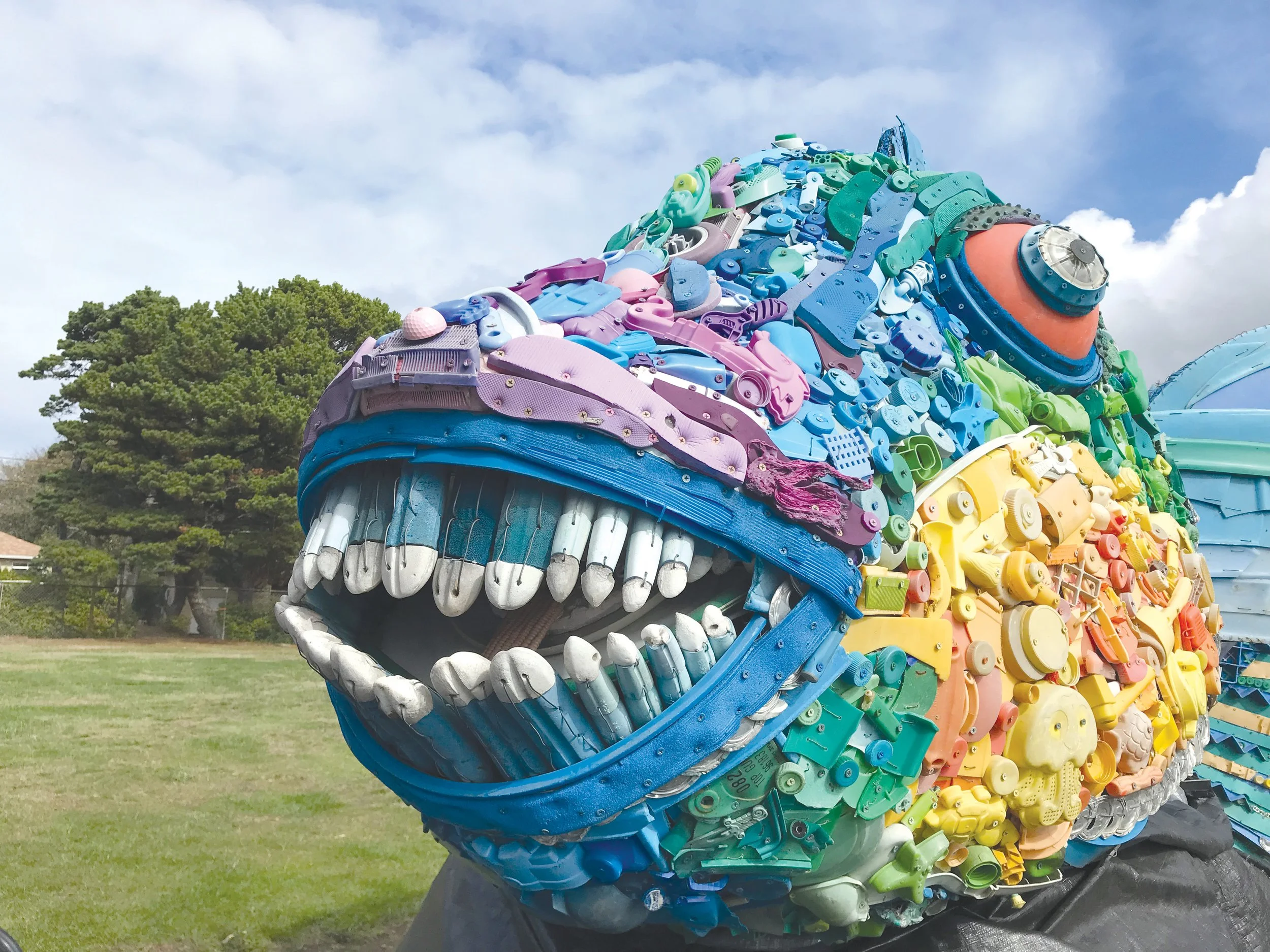Wash & learn
By Michael Edwards
For the TODAY
“The mission of the Washed Ashore Project is to build and exhibit aesthetically powerful art and to educate a global audience about plastic pollution in the ocean and to spark positive change in consumer habits.”
— Angela Haseltine Pozzi, founder and executive and artistic director of the Washed Ashore Project
Strewn along the wrack line of Oregon’s beaches, kelp and shell fragments mix with plastic shards and bottle caps. Along with the domestic debris, the North Pacific Gyre deposits nurdles from toy manufacturers in China, Suntory Whisky bottles from Japan, styrofoam chunks from Siberia and fishing floats from the Korean Peninsula onto Oregon’s emerald shores.
According to Captain Charles Moore, the author of “Plastic Ocean” and a member of the Algalita Marine Research Foundation, during one three-day winter rain storm in Southern California, the San Gabriel and the Los Angeles Rivers, “discharged no less than 2.3 billion pieces of plastic into the ocean, with a total weight of roughly 30 tons.”
Scientists estimate that five trillion plastic particles are riding the ocean’s currents. The oceans’ Texas-sized and metastasizing plastic rafts know no borders.
The volume of plastic being produced, used and dumped into the oceans is staggering, and like many difficult issues, knowing about the problem without being provided with an avenue to address the issue only adds to the anxiety.
The goal of the artists and volunteers of the Washed Ashore Project is to move citizens from paralysis to action.
The Lincoln City Cultural Center’s winter guests, Priscilla the Parrotfish, Chompers the Shark, Flash the Marlin and company are the creations of the citizens of the Southern Oregon Coast. Over the past 12 years, Washed Ashore’s visionary leader and artist, Angela Haseltine Pozzi, has put together a dedicated staff and mobilized hundreds of volunteers.
Third graders and Lions Club seniors clean and sort beach-gathered plastics, high school shop students weld the steel skeletons of the sculptures, middle schoolers produce videos that promote proper plastic disposal and sculptors bring sea creatures to life through the medium of Bic lighters and bottle caps.
The project’s sculptures have both an aesthetic and an educational purpose. Visitors to the traveling exhibit will be struck by Stanley the Sturgeon’s likeness to a real sturgeon, but close observers will also notice that while the plastic pieces are grouped to look like scales, gills and eyes, a few pieces retain the original words and numbers that were stamped onto them at the factory.
The artists include these stamped pieces because they want visitors to understand that the sculptures, though visually stunning, are constructed of discarded plastic.
Witnessing a sea turtle struggling to free itself from monofilament fishing line is an obvious manifestation of how plastics affect the ocean's animals, but plastic has more insidious effects on sea life.
A study entitled “Plastic Products Leach Chemicals that Induce Invitro Toxicity Under Realistic Conditions,” highlights how plastics harm the endocrine systems of wildlife. Floating plastic bits attract massive amounts of PCBs and DDT to their surfaces. Though no longer manufactured, these highly toxic chemicals persist in the marine environment. Studies suggest that when an albatross ingests a plastic bottle cap, that she not only compromises her own digestive system, she also passes dioxins along to her chicks.
The same plastics that threaten sea birds also threaten the largest whales down to the tiniest krill.
Because of the volume of plastic being dumped into the oceans, the objective of Washed Ashore isn't to scrub the oceans clean as much as it is to build awareness of the problem and to engage citizens in the process of changing laws and consumer habits. When asked what citizens could do in their own homes to decrease plastic consumption, Parks said: “everyone, even kids, can assess what plastic is regularly entering their homes and then select one or two of the plastic items to replace.”
With the help of the Washed Ashore Project, citizens are reassessing their relationship with plastic, and coastal states and municipalities are trying to decrease the use of plastics.
Lincoln City, for instance, banned polystyrene containers, and in order to decrease the use of plastic water bottles, the city is considering installing filtered water filling stations at popular beach access points. The hope is that even small alterations in the consumption habits of millions of individuals will lead to a significant decrease in the amount of plastics entering the ocean.
For more information, go to washedashore.org.

